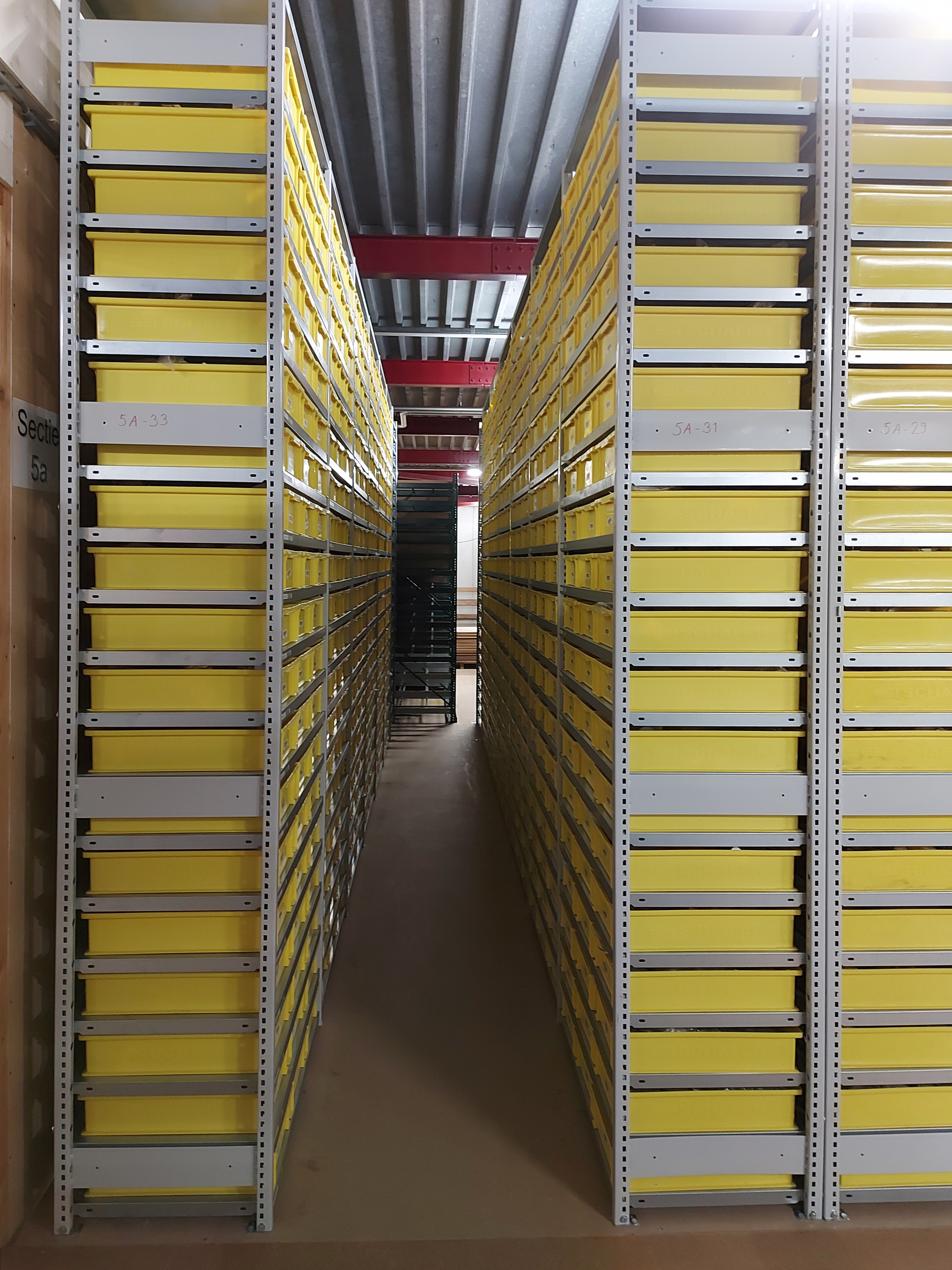With help from the Netherlands Enterprise Agency, the Geological Survey of the Netherlands has been given borehole samples from offshore wind farms to store at the Central Core Storage Facility so that they are publicly available for future research.
The delivery involves dozens of cubic metres of particularly valuable material from depths of up to 80 metres below the seabed. This material is an important addition to the existing collection of sediment samples at the Geological Survey's Central Core Storage Facility (Dutch). In the North Sea part of this collection, only layers up to about 10 metres below the seabed surface are well represented. These shallowest layers represent about 100,000 years of changes in climate, sea level and depositional environments. With the new, slightly deeper samples from the Dutch seabed, 2.5 million years of Early and Middle-Pleistocene development can be much better investigated than before. There is still much to learn about this time period.
'Recycling' of borehole samples for research
The samples supplied are very welcome. The Geological Survey is unable to afford the boreholes needed to obtain gravel, sand, clay and other sediment from so deep below the seabed. Each moderately deep wind-farm borehole from which samples become available has cost at least a tonne in vessel time, equipment and labour. Without intervention of the Netherlands Enterprise Agency, these unique samples would not become FAIR: findable, accessible, interoperable and reusable. Now they are getting a second life in research on the energy transition, CO2 storage, offshore infrastructure and the further rollout of offshore wind energy. And there is much more to come.
The corresponding borehole-sample descriptions have also been supplied. They will be stored in the Geological Survey's publicly accessible database so that they are available to everyone. The Geological Survey itself has been using this information for geomodelling the North Sea subsurface (Dutch). The samples from offshore wind farms bridge the gap between deep and shallow mapping. Precisely this range, between 10 and 100 metres below the seabed, is most interesting for the energy transition. The first external parties are starting to find the samples as well. A wealth of information awaits academics and industry professionals.
Stored in library of the subsurface
The repackaged and barcoded samples are stored in the Central Core Storage Facility. This geological warehouse is like a library of the subsurface. An enormous collection of sediment and rock samples is stored there. The samples have been collected over a period of more than 100 years and come from construction pits, boreholes and excavations on land and at sea. There are even a few oddities. Much of the material is available for research. Do you want to know more about it? Get in touch with our Service Desk.
 A yellow wall of crates containing wind-farm samples in the Core Storage Facility
A yellow wall of crates containing wind-farm samples in the Core Storage Facility